This article was medically reviewed by Luba Lee, FNP-BC, MS. Luba Lee, FNP-BC is a Board-Certified Family Nurse Practitioner (FNP) and educator in Tennessee with over a decade of clinical experience. Luba has certifications in Pediatric Advanced Life Support (PALS), Emergency Medicine, Advanced Cardiac Life Support (ACLS), Team Building, and Critical Care Nursing. She received her Master of Science in Nursing (MSN) from the University of Tennessee in 2006.
There are 8 references cited in this article, which can be found at the bottom of the page.
wikiHow marks an article as reader-approved once it receives enough positive feedback. This article has 12 testimonials from our readers, earning it our reader-approved status.
This article has been viewed 7,030,495 times.
The sun, tanning lights, or any other source of ultraviolet light can cause a sunburn or reddened, tender skin. Prevention is better than the cure, especially as the accompanying skin damage is permanent, but there are treatments available to encourage healing, prevent infection, and reduce pain.[1]
Steps
Relieving Pain and Discomfort
-
1Have a cool bath or gentle shower. Keep the water just below lukewarm (cool, but not tooth-chattering cold) and relax for 10 to 20 minutes. If showering, use a gentle stream of water, not a full blast, to avoid irritating your skin. Air dry or pat gently with a towel to avoid abrading the skin.
- Avoid using soap, bath oils, or other detergents as you bathe or shower. Any such products can irritate your skin and possibly make the effects of the sunburn feel even worse.
- If you have blisters forming on your skin, take a bath instead of showering. The pressure from the shower might pop your blisters.
-
2Apply a cold, wet compress. Dampen a washcloth or other piece of fabric with cold water, and lay it over the affected area for 20 to 30 minutes. Re-wet it as often as you need to.Advertisement
-
3Take an over-the-counter pain reliever. Over-the-counter drugs such as Ibuprofen or aspirin can lessen the pain, and may or may not reduce inflammation.
- Do not give aspirin to children. Instead, opt for something that is specifically marketed as a child's dose of acetaminophen. Child's Motrin (Ibuprofen) is a good option due to the possible anti-inflammatory effect.
-
4Try a topical pain reliever. Drugstores also sell sprays meant to relieve red and itchy skin. Sprays that contain benzocaine, lidocaine or pramoxine have a numbing effect that may help with the pain.[2] However, as these are potential allergens, it may be best to test the medication on an unaffected patch of skin first and wait a day to see if it causes itchiness or redness.
- These sprays should not be used on children 2 years of age or younger without a doctor's advice. Sprays containing methyl salicylate or trolamine salicylate may endanger children 12 and under, and capsaicin can be dangerous for people 18 and under, or for anyone with a chili allergy.[3]
-
5Wear loose cotton clothing over sunburned areas. Baggy t-shirts and loose cotton pajama pants are ideal clothing items to wear while you're recovering from a sunburn. If you can't wear loose clothing, at least make sure your garments are cotton (this fabric allows your skin to "breathe") and fit as loosely as possible.
- Wool and some synthetic fabrics are especially irritating, due to scratchy fibers or trapped heat.
-
6Consider cortisone cream. Cortisone creams contain steroidal treatments that may reduce inflammation, although evidence suggests that they have little effect on sunburns. If you think it's worth a try, you can find low-dose, over-the-counter tubes at your local drugstore or supermarket. Look for hydrocortisone or something similar.
- Do not use cortisone cream on young children, or in the face region. Ask your pharmacist for advice if you have any doubts or concerns about using this cream.
- This medication cannot be sold as over the counter sunburn treatment in the United Kingdom.[4]
Preventing Re-Exposure and Further Damage
-
1Minimize sun exposure. Ideally, you should hang out in the shade or wear clothing over affected areas if you're going back out into the sunshine.
-
2Wear sunscreen. Use a sunscreen with at least SPF 30 whenever you go outside. Reapply every hour, after exposure to water or excessive sweat, or according to the product label.
-
3Drink plenty of water. Sunburn can be dehydrating, so it's important to counterbalance this by drinking plenty of water while you recover. Eight to ten glasses of water a day are recommended while recovering, with each glass containing 1 cup (240mL) of water.
-
4Apply unscented moisturizer to your skin as it starts to heal over. When you no longer have open blisters or the redness of the sunburn has subsided a bit, you can safely use a moisturizing cream. Liberally apply a creamy, unscented moisturizer to sunburned areas over the next few days or weeks to prevent peeling and irritation.
Seeking Medical Attention
-
1Call an emergency number for serious conditions. Call your local emergency number if you or a friend has one or more of these symptoms:
- Too weak to stand
- Confusion or inability to think clearly
- Passed out
-
2Call a doctor if you have signs of heatstroke or dehydration. If you're experiencing the following symptoms about your sunburn, visit a doctor as soon as you can. If any of these symptoms are debilitating, call an emergency number rather than waiting for an appointment.
- Feeling weak
- Feeling faint or dizzy
- Headache or pain that doesn't respond to pain relief methods below
- Rapid pulse or rapid breathing
- Extreme thirst, no urine output, or sunken eyes
- Pale, clammy, or cool skin
- Nausea, fever, chills, or rash
- Your eyes hurt and are sensitive to light
- Severe, painful blisters, especially more than ½ in (1.25 cm) wide
- Vomiting or diarrhea
-
3Watch for signs of infection. If you're experiencing the following symptoms, especially around a blister, your skin might be infected. Medical attention is vitally important.
- Increased pain, swelling, redness, or warmth around the blister
- Red streaks extending away from the blister
- Drainage of pus from the blister
- Swollen lymph nodes in your neck, armpit, or groin
- Fever.
-
4Call emergency services for third-degree burns. It is possible, though rare, to get third-degree burns from the sun. If your skin looks charred, waxy and white, much darker brown, or raised and leathery, don't wait to call an emergency number. Raise the injured area above your heart while you wait, and move clothing to avoid it getting stuck to the burn, without undressing.[5]
Treating Blisters
-
1Seek medical help. Contact a doctor immediately if your skin is blistering from sunburn. This is a sign of severe sunburn that should be treated with personal medical advice, and the blisters put you at risk of infection. While waiting for an appointment, or if your doctor does not recommend any specific treatment, follow the precautions and general advice below.
-
2Leave blisters intact. If your sunburn is serious, blistering "bubbles" of the skin may form. Do not attempt to pop them, and try to avoid rubbing or scraping them. Popped blisters can lead to infection and scarring.
- If you absolutely cannot function with the blisters intact, visit a doctor and ask to have them popped in a safe, sterile context.
-
3Protect blisters with a clean dressing. Wash your hands with soap and water before adding or changing dressings to prevent infection. Small blisters can be covered with an adhesive bandage (plaster), while larger ones can be covered with a gauze pad or surgical dressing, taped gently into place with medical tape.[6] Change the dressing daily until the blister has gone.
-
4Try an antibiotic ointment if you see signs of infection. Consider using an antibiotic ointment (such as polymyxin B or bacitracin) on your blisters if you suspect infection. Infection might manifest as a foul smell, yellow pus, or extra redness and irritation around the skin. Ideally, visit a doctor to receive a diagnosis and advice specific to your symptoms.
- Note that some people are allergic to these ointments, so do a "patch test" on an unaffected area first and make sure you don't have a bad reaction.
-
5Handle a burst blister. Do not tear off the flaps of skin left over from broken blisters. You'll shed them soon enough; don't risk irritating your skin even more now.
Considering Home Remedies
-
1Use these at your own risk. The remedies below have not been sufficiently scientifically verified, and should not replace scientific medical treatment. Additional remedies not listed below may actually delay healing or encourage infection. Avoid egg whites, peanut butter, petroleum jelly, and vinegar in particular.[7]
-
2Immediately apply 100% aloe vera, or, even better, pure aloe vera from a plant. Aloe vera is known for relieving some of the pain while also hydrating the skin. This method, when applied immediately and often, can take away even the worst sunburns in a day or two.
-
3Try the tea method. Brew three or four teabags in a pitcher of warm water. When the tea is almost black, remove the tea bags and let the liquid cool to room temp. Gently dab at the sunburn with a cloth soaked in the tea, the more, the better. Do not wash it off. If the cloth causes pain, dab at the burn with the teabags instead.
- Try to do this at bedtime and leave it on overnight.
- Be aware that the tea can stain clothing and sheets.
-
4Consider eating foods with antioxidants and vitamin C. If the burn is very recent (still red and not peeling), try eating food full of antioxidants and vitamin C, such as blueberries, tomatoes, and cherries. One study showed that this reduced the body's need for fluids, lowering the risk for dehydration.
-
5Try calendula ointment. Calendula ointment is considered by some to be especially good for severe burns with blistering. You can find it at a naturopathic store; ask the retailer or naturopath for advice. Be aware that no herbal treatment is appropriate for the treatment of serious injuries; if you have severe burns or blisters that won't heal, see a doctor immediately.
-
6Apply witch hazel lotion. This treatment may soothe your skin.[8] Apply carefully to affected area and leave on.
-
7Use Egg Oil (Oleova). Egg oil is rich in omega-3 fatty acids like Docosahexaenoic Acid. It also contains immunoglobulins, xanthophylls (lutein & zeaxanthin) and cholesterol. The omega-3 fatty acids in egg oil are bound to phospholipids which have the ability to form liposomes (nanoparticles), which may be able to penetrate deep and heal the dermis.
- Massage the damaged skin with egg oil twice a day. Gently massage the area including the surrounding one-inch periphery for ten minutes during each of two daily sessions.
- Leave it on for at least an hour, avoiding exposure to direct sunlight.
- Wash off with a mild, pH neutral body wash. Avoid soap or any other alkaline substances.
- Repeat twice a day until the skin is restored to its pre-burn condition.
Expert Q&A
-
QuestionHow can I help my sunburn heal fast?
 Mohiba Tareen, MDMohiba Tareen is a board certified Dermatologist and the founder of Tareen Dermatology located in Roseville, Maplewood and Faribault, Minnesota. Dr. Tareen completed medical school at the University of Michigan in Ann Arbor, where she was inducted into the prestigious Alpha Omega Alpha honor society. While a dermatology resident at Columbia University in New York City, she won the Conrad Stritzler award of the New York Dermatologic Society and was published in The New England Journal of Medicine. Dr. Tareen then completed a procedural fellowship which focused on dermatologic surgery, laser, and cosmetic dermatology.
Mohiba Tareen, MDMohiba Tareen is a board certified Dermatologist and the founder of Tareen Dermatology located in Roseville, Maplewood and Faribault, Minnesota. Dr. Tareen completed medical school at the University of Michigan in Ann Arbor, where she was inducted into the prestigious Alpha Omega Alpha honor society. While a dermatology resident at Columbia University in New York City, she won the Conrad Stritzler award of the New York Dermatologic Society and was published in The New England Journal of Medicine. Dr. Tareen then completed a procedural fellowship which focused on dermatologic surgery, laser, and cosmetic dermatology.
FAAD Board Certified Dermatologist Basic things that are really beneficial include cool compresses and aloe straight from the plant. Soaking in an oatmeal bath will help cool and soothe the skin as well.
Basic things that are really beneficial include cool compresses and aloe straight from the plant. Soaking in an oatmeal bath will help cool and soothe the skin as well.
Warnings
- Pay close attention to any medications (including herbal remedies and essential oils) that list an increased sensitivity to sunlight as a side effect.⧼thumbs_response⧽
- Do not pick, poke, scratch or peel your sunburn. This will cause even more irritation. By picking off the layer of sunburned skin, you will not uncover a tan, nor will you make the "peeling" process go faster; what it may do though, is introduce infection.⧼thumbs_response⧽
- Do not put ice on a sunburn. This can feel like getting an "ice burn", which can be almost as painful as sunburn, and may damage your skin further.⧼thumbs_response⧽
- Even sun exposure that leads to tans instead of burning causes skin damage and may increase the risk of some skin cancers.⧼thumbs_response⧽
References
- ↑ http://www.nlm.nih.gov/medlineplus/ency/article/003227.htm
- ↑ http://www.knowyourotcs.org/symptom/pain-and-fever/topical-pain-relievers/
- ↑ http://www.knowyourotcs.org/symptom/pain-and-fever/topical-pain-relievers/
- ↑ http://www.nhs.uk/Conditions/Sunburn/Pages/Treatment.aspx
- ↑ http://www.healthline.com/health/burns
- ↑ http://www.nhs.uk/Conditions/Blisters/Pages/Treatment.aspx
- ↑ http://www.mayoclinic.com/health/first-aid-sunburn/FA00028
- ↑ http://www.webmd.com/vitamins-supplements/ingredientmono-227-witch%20hazel.aspx?activeingredientid=227&activeingredientname=witch%20hazel
- ↑ http://europepmc.org/abstract/med/16623024
About This Article
If you need to treat a sunburn, take a cool bath or a gentle shower to help soothe your discomfort. Allow your skin to air dry or gently pat it with a towel to avoid causing more irritation. If the sunburn is still hurting, apply a cold, wet compress to the affected area for 20-30 minutes, and take an over-the-counter pain reliever to ease the pain and reduce inflammation. You can also apply aloe or a topical pain reliever to the sunburn to help numb it for a while. Wear loose-fitting clothing and avoid going out in the sun until your sunburn heals. To learn more from our Medical Expert co-author, like when you should contact a doctor about your sunburn, keep reading the article!
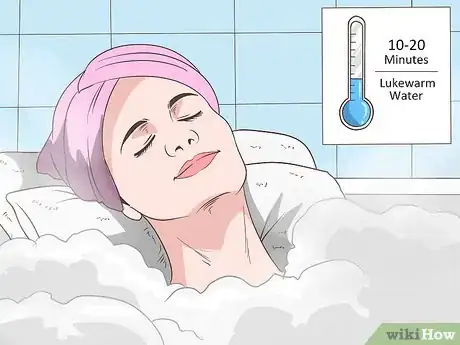

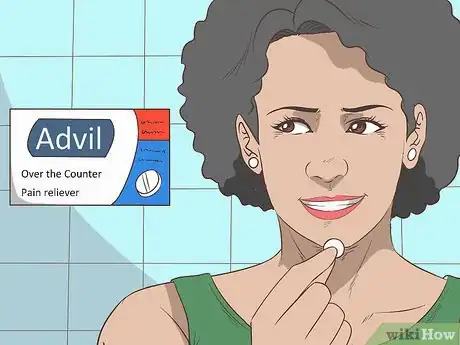
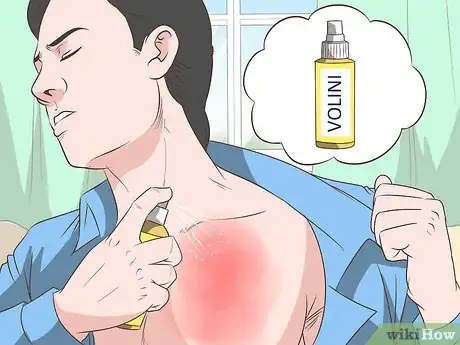

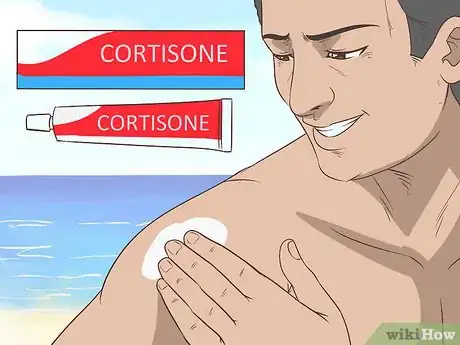

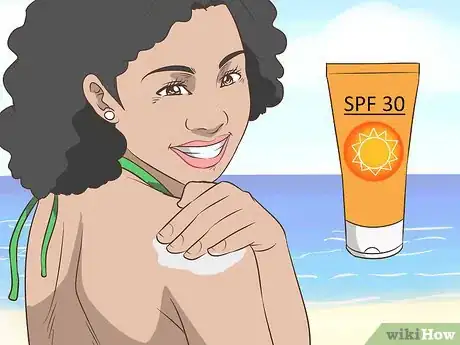


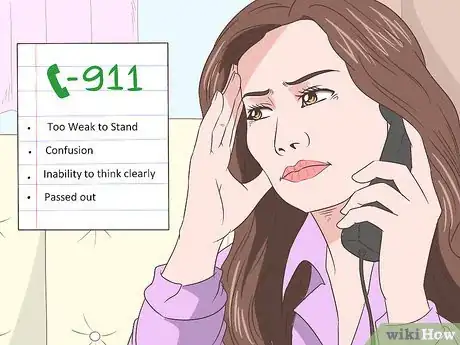

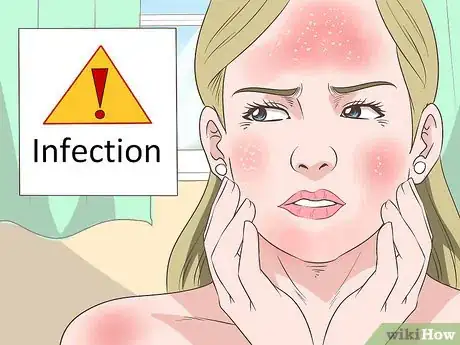
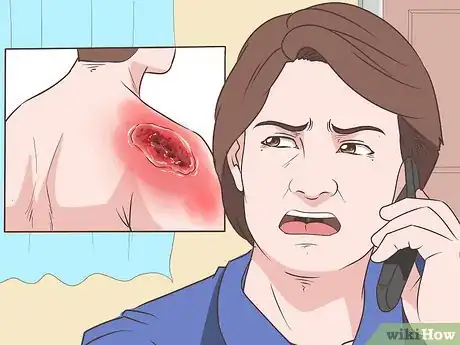
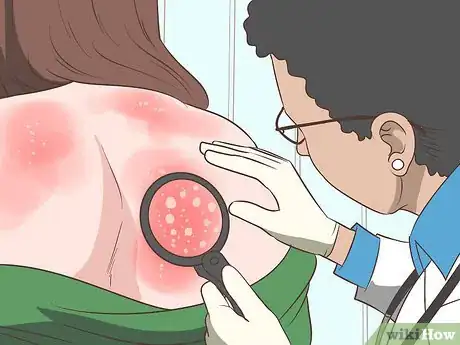
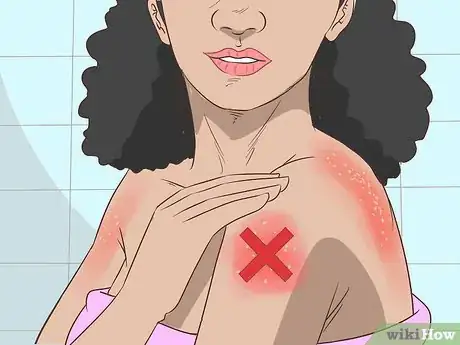
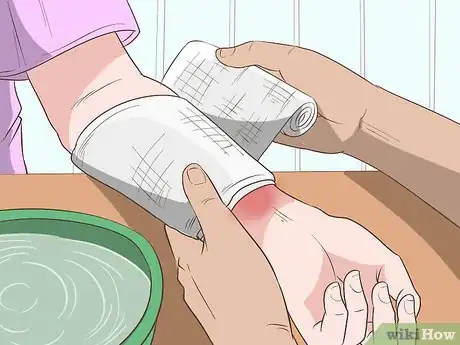
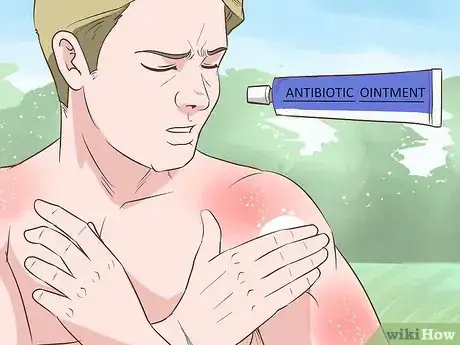


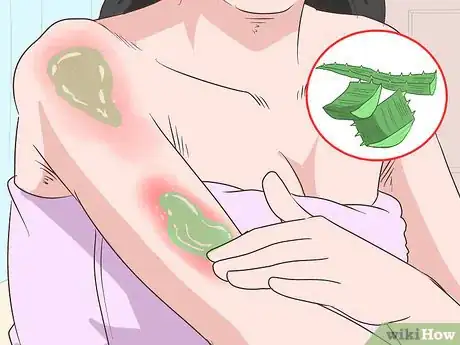
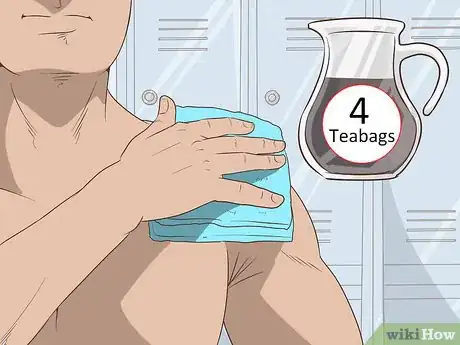

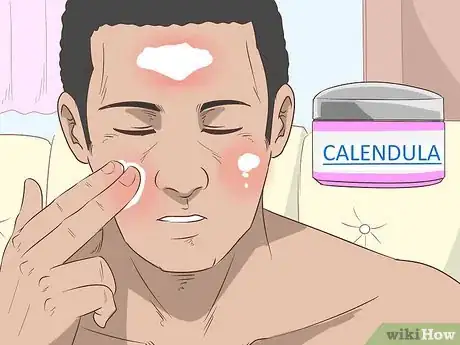
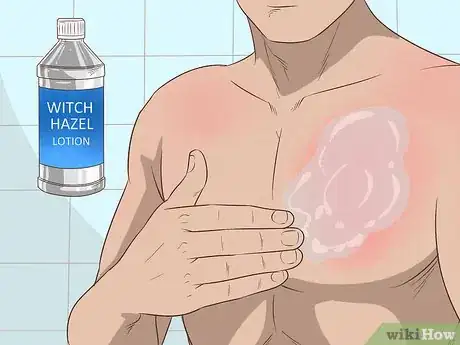
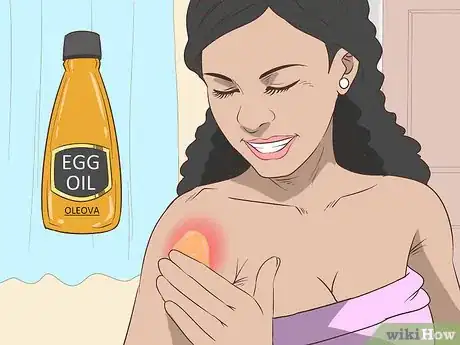
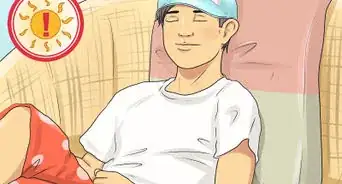



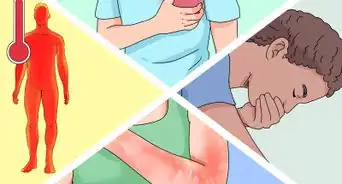
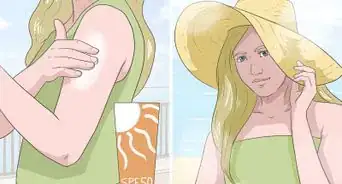
-Step-11-Version-2.webp)
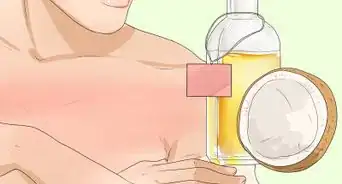
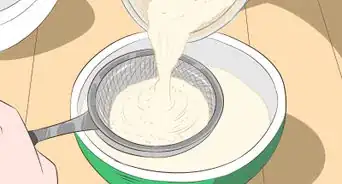
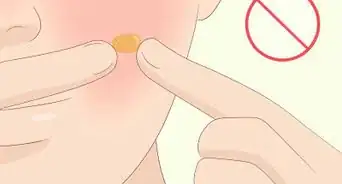

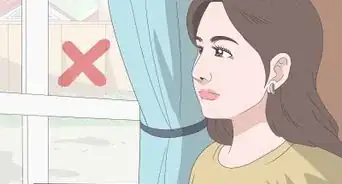
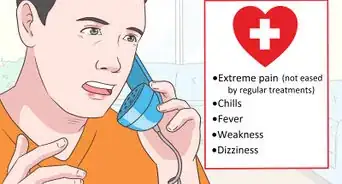
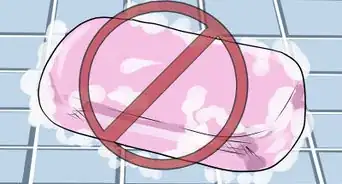











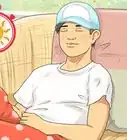






































Medical Disclaimer
The content of this article is not intended to be a substitute for professional medical advice, examination, diagnosis, or treatment. You should always contact your doctor or other qualified healthcare professional before starting, changing, or stopping any kind of health treatment.
Read More...